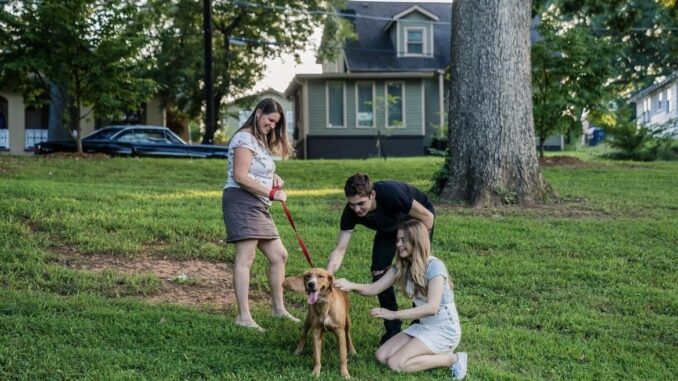
The After series has always been a rollercoaster of intense emotions, chaotic choices, and raw passion. But in After We Fell, the third installment of the franchise, something subtly powerful happens beneath the storm of arguments and kisses—we witness a shift. The story moves beyond the surface of toxic romance and begins to unravel the deeper layers of healing, trust, and emotional growth. It may not offer a perfect love story, but it gives us something real: the idea that heartbreak can become hope, and that even the most fractured relationships can find light if the people within them dare to change.
The Chaos Before the Calm
Before we get to tenderness, we must wade through toxicity—and After We Fell doesn’t shy away from showing us that. Tessa and Hardin, the star-crossed couple we love and loathe in equal measure, are constantly caught in a cycle of fighting and reconciling. Theirs is a relationship marred by trauma, insecurity, and a fear of abandonment that rears its head at every wrong turn. They don’t communicate well. They hurt each other. And yet, they can’t seem to walk away.
This is where After We Fell takes a brave step. Instead of glamorizing the pain, it forces us to confront it. Tessa’s growing awareness of her self-worth, her career ambitions, and the need for boundaries all point to a woman trying to evolve. Hardin, on the other hand, begins to confront his demons—not for Tessa, but for himself. That’s an important distinction. Love isn’t supposed to be a rescue mission; it’s supposed to be a partnership. And After We Fell plants the seeds for this transition.
A Different Kind of Love Story
At its core, After We Fell isn’t a fairytale romance—it’s a story about learning how to love and be loved in a healthy way. That means acknowledging the damage you’ve done, being willing to do the work, and—perhaps hardest of all—letting go of control. For Hardin, letting Tessa pursue her dreams without manipulating her is a quiet act of love. For Tessa, deciding to walk away (even temporarily) is a radical act of self-respect.
This is where the narrative starts to soften. The yelling becomes quieter, the silences become more meaningful, and the moments of affection feel earned rather than impulsive. The emotional intimacy—the shared trauma, the quiet comforts, the looks that say “I see you”—begins to replace the volatility. That tenderness doesn’t erase the pain, but it does start to rewrite the narrative.
When Heartbreak Teaches Us Something
What sets After We Fell apart is that it doesn’t tie everything up in a neat little bow. There’s still uncertainty, there’s still hurt—but there’s also growth. And that’s what makes it feel real. We’ve all been there—hanging onto someone who feels like home but also brings us pain. We’ve all asked ourselves: Is love supposed to feel this hard? The film doesn’t give us a definitive answer, but it gives us something better—a mirror to look into.
Heartbreak, in this context, isn’t just a plot device—it’s a lesson. It teaches both characters who they are without the other. It shows us how the deepest wounds can be the start of transformation. And even if that transformation doesn’t lead back to the same relationship, it leads to a better version of yourself. That’s the hope embedded in the heartbreak.
Visual Language of Healing
One of the most underrated aspects of After We Fell is how it visually communicates emotional shifts. The lighting softens. The camera lingers longer on vulnerable expressions. The score mellows out, with more introspective musical choices replacing the heavy beats of previous films. These subtle changes reflect the evolving tone of the story—from chaos to contemplation, from hurt to healing.
The film doesn’t rush this change. It lets us sit with the discomfort. It allows us to feel the uncertainty of Tessa and Hardin’s journey. And in doing so, it offers something that many romantic dramas skip over: emotional realism. Healing isn’t linear. Love doesn’t always arrive neatly packaged. And sometimes, the kindest thing you can do for someone you love is to step back and let them find their own strength.
The Hope in the Hurt
Despite everything—the broken promises, the shouting matches, the betrayals—After We Fell somehow leaves us hopeful. Not necessarily because everything is fixed, but because we’ve seen the characters begin to try. And that attempt—clumsy, imperfect, but sincere—is what makes the film resonate.
Hardin begins to see that love isn’t about possession; it’s about presence. Tessa starts to realize that love doesn’t mean sacrificing her dreams. And together, they learn that a relationship can’t thrive on passion alone—it needs patience, empathy, and above all, space to breathe.
That’s not just a romantic lesson; it’s a life one. Whether you’re 16 or 36, chances are you’ve had to navigate the confusing territory of loving someone who isn’t always good for you—or being the one who needs to change before love can work. After We Fell doesn’t give us perfection, but it gives us permission: permission to feel deeply, to make mistakes, and to grow from them.
In the end, After We Fell doesn’t just redefine what heartbreak looks like—it redefines what comes after. It tells us that the end of one version of a relationship can be the beginning of another. One that’s slower, more thoughtful, and grounded in mutual healing. And that even if the love doesn’t survive, the people within it can.
